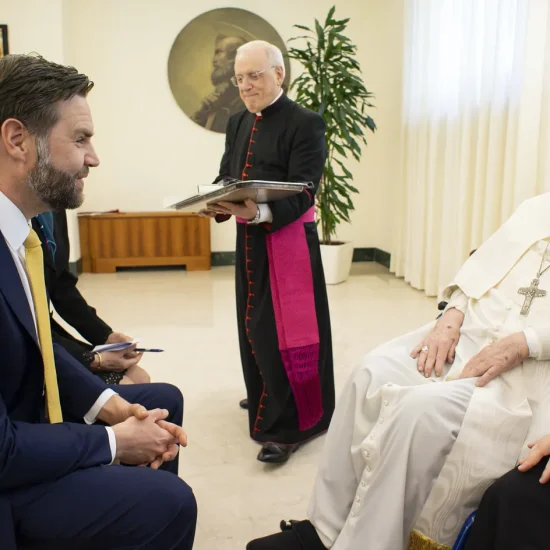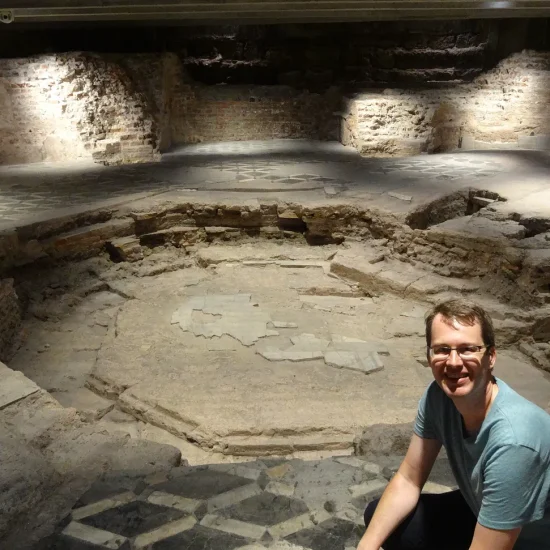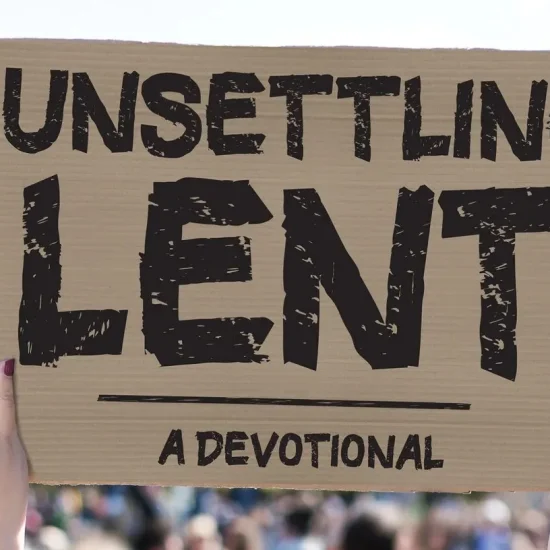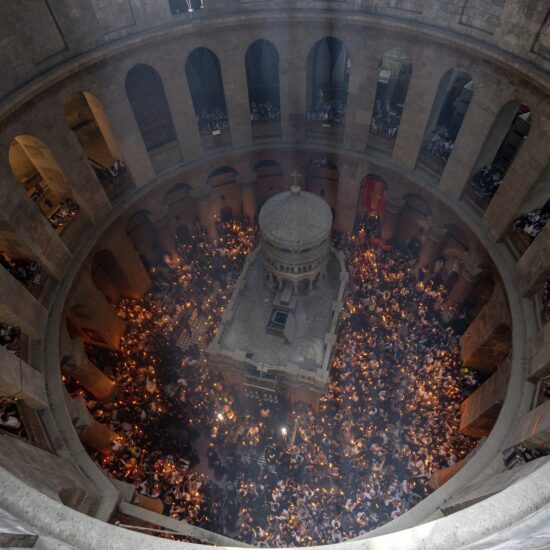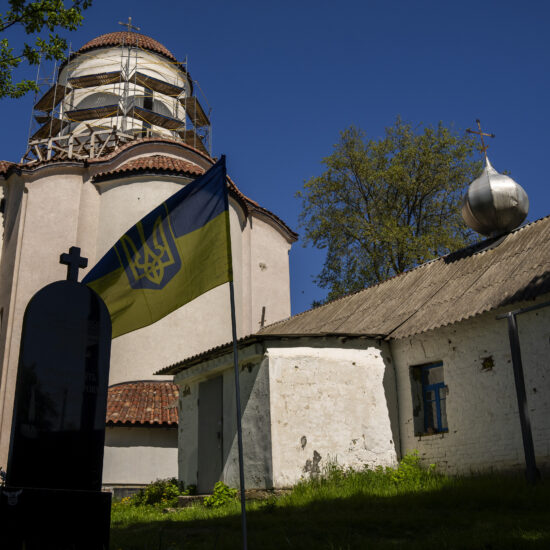Any church that ever presented an Easter pageant understands the questions: How should the Last Supper be staged? How many women should approach the empty tomb? How many angels should they encounter there?
And many Sunday school teachers have struggled to answer that pesky math problem about how Friday afternoon to Sunday morning equals “three days and three nights” in a tomb.
Questions arise — so to speak — every Easter, troubling some Christians as they struggle to reconcile all the details of the Resurrection accounts in the four Gospels.
But many New Testament scholars insist different perspectives of the witnesses underscore the independent testimony of the Gospels—as does their remarkable agreement regarding the key elements surrounding Jesus’ last days, Crucifixion and Resurrection.
Here is how experts respond to some frequently asked questions:
• Was the Last Supper the Passover meal?
The Synoptic Gospels — Matthew, Mark and Luke — present the Last Supper as the Passover meal Jesus shared with his disciples on the eve of his crucifixion. John’s Gospel refers to the arrest of Jesus occurring before the religious leaders ate the feast of Passover and reports the crucifixion as occurring on the day of preparation for the Passover.
Bruce Corley, president of the B.H. Carroll Theological Institute, notes evidence that the term “preparation day” had become by the first century a synonym for Friday, the day faithful Jews prepared for the Sabbath. So, the fourth Gospel could be using the term to refer to the Friday of Passover week, not a day of preparation for the Passover meal.
“The distinguishing features of the Passover meal are found in the narratives — reclining at the table, the distribution of alms, use of the sop dipped in bitter sauce as a memorial, prayers, shared cups and hymns,” Corley observed. “The objection that the lamb is missing obscures the typology of the Lamb who is about to pour out his blood.”
Regarding the reference in John’s Gospel that the Jewish religious authorities did not enter Pilate’s palace to avoid ceremonial uncleanness before they ate the Passover, Corley offered the possibility that the statement refers to a meal eaten during the feast week that followed.
• On what day of the week was Jesus crucified?
In 1 Corinthians 15:4, the Apostle Paul refers to Jesus being “raised on the third day” — a phrase that also appears repeatedly in Matthew’s Gospel. On that basis — and based on the Gospel accounts indicating the body of Jesus had to be removed hastily from the cross before the Sabbath — Christians historically have viewed Friday as the day of the crucifixion.
“By Jewish reckoning — in which the day begins at sundown — Jesus was crucified on Friday afternoon (Day 1), Saturday is Day 2, and Sunday is the ‘third day,’” said Mikeal Parsons, religion professor at Baylor University.
“The straightforward statements in all four Gospels place the crucifixion of Jesus on a Friday afternoon, the day before the Sabbath, which began at sundown on Friday evening,” Corley added.
However, some Christians have insisted the crucifixion must have occurred on Thursday, because of a reference in Matthew 12:40. In that passage, Jesus alluded to the Old Testament story of Jonah, saying just as Jonah was in the belly of a great fish “three days and three nights,” so also he would be entombed “in the heart of the earth” before the resurrection.
Steve Casey of Stonewall, La., author of In God We Trust: The Faith of the Men on Our Money, maintains that except for years when Passover fell on Saturday, the Jews observed two Sabbaths during Passover week.
|
More Resources: Some of the scholars quoted briefly here provided more extensive answers to these questions: • When to celebrate Easter • Did Jesus Die on Friday of Passover Week? • Did Jesus Descend into Hell? • Was Friday a Preparation Day for the Passover Meal? • Who Saw What at the Empty Tomb?
|
Jesus was raised from the dead on the morning after the regular weekly Sabbath, but he was crucified on the preparation day for the Passover Sabbath, he asserts.
“The events of this most detailed week of Jesus’ life come together perfectly if in that year the Passover Sabbath fell on Friday. That would place Jesus’ crucifixion on the day of preparation for the Passover (Thursday); followed by the Passover Sabbath (Friday); followed by the weekly Sabbath (Saturday); followed by the resurrection Sunday morning. Jesus was in the grave, as he had predicated, three days and three nights,” Casey said. “The problem with our tradition is that those who established the tradition failed to realize that there are two Sabbaths during Passover week rather than just one.”
But Christians who claim Jesus must have been put to death on a day other than Friday fail to understand “three days and three nights” as a Jewish idiomatic expression, Parsons noted.
“There is no reason to think Jesus saw any conflict between this allusion to Jonah and his other references to the Son of Man being raised on the third day,” he said. “It was a Jewish convention to reckon part of a 24-hour day for the whole. So, parts of Friday, Saturday and Sunday count for the whole of three days.”
• Did Jesus go to hell between the crucifixion and resurrection?
While the Apostles’ Creed may not be as familiar to Baptists as to many other Christian traditions, many have at least heard about its assertion that “Christ descended to hell.” The biblical basis for the statement depends primarily on two references in 1 Peter — one that said Christ “went and preached to the spirits in prison” and the other saying, “The gospel was preached even to the dead.” Ancient Christian tradition links these Scriptures to “the harrowing of hell” — Christ’s rescue of Old Testament saints from the place of the dead.
The idea that Jesus descended to hell “is neither clear nor necessary” on the basis of the 1 Peter passages, said Todd Still, professor of Christian Scriptures at Baylor University’s Truett Theological Seminary.
“Rather, the preponderance of New Testament evidence suggest that although Jesus was dead, ‘He was not abandoned to Hades, nor did his flesh experience corruption (Acts 2:31, quoting Psalm 132:11). Instead, God raised him from the dead.”
• How many women were at the empty tomb? How many angels met them?
Matthew and Mark refer to two women at the tomb — Mary Magdalene and the “other Mary,” the mother of Joses. John’s Gospel only mentions Mary Magdalene. Luke mentions Mary Magdalene, Joanna, Mary the mother of James and other women.
“What was witnessed was seemingly more important to the Gospels’ writers than cataloging everyone who witnessed it,” Still noted.
In a time and culture when women were not acceptable as legal witnesses, the Gospel writers faithfully recorded that women first saw the empty tomb, Parsons added. If, as some skeptics later claimed, the accounts of the empty tomb had been fabricated, surely proponents of Christianity would have selected more compelling witnesses, he noted.
“While some would dwell on the apparent discrepancy in number and names, it is remarkable that all the evangelists agree on this key point: It was women who first discover the empty tomb,” Parsons said.
Likewise, differences regarding the number of angels — one in Matthew and Mark, two in John and Luke — underscore the reliability of the record.
“Again, the divergence in the tradition, counter-intuitively perhaps, serves to strengthen the tradition, since they represent independent testimony. If they all agreed on the details, moderns might accuse them of collusion,” Parsons said.
• Why don’t we celebrate Easter the same day every year?
It’s complicated, all the experts agreed.
The matter of Easter’s date has been a source of controversy and division in the church since its early history, said Karen Bullock, professor of Christian heritage at the B.H. Carroll Theological Institute.
Differences between Antioch and Alexandria, and later between Constantinople and Rome, resulted in different liturgical traditions and even different calendars.
“Unfortunately, this confusion over Easter’s observance is but one of the carryovers of a severed church,” Bullock said.
Nick Zola, a doctoral student at Baylor University, offers a somewhat simplified explanation of the Easter date debate:
“The reason Christians don’t celebrate Easter at the same time every year is because it was originally tied to the Jewish festival of Passover, the time of year when Jesus was crucified and resurrected,” Zola said. “The Jews followed a lunar calendar, where each month began with the new moon. Passover fell on the 14th day of the first month (Nisan), coinciding with the full moon. When early Christians wanted to commemorate the anniversary of the death and resurrection of Jesus, most observed it on the Sunday following Passover, since that was when he was raised from the dead, and the day they were already meeting.
“This worked well as long as there were Jewish Christians who knew when Passover was. But once Christianity had grown apart from Judaism, it became rather awkward for Christians to go ask their Jewish neighbors the date of Passover that year so they could know when to celebrate the resurrection of their Lord.
“So, at the Council of Nicaea in 325, Christians adopted their own computation: Easter would be the first Sunday following the first full moon following the spring equinox (when the day and the night are the same length). Passover usually was the first full moon after the spring equinox, so the date of Easter didn’t really change, but now the central date of the Christian year was no longer tied to a Jewish holiday, which had been embarrassing for the church of that time.”

